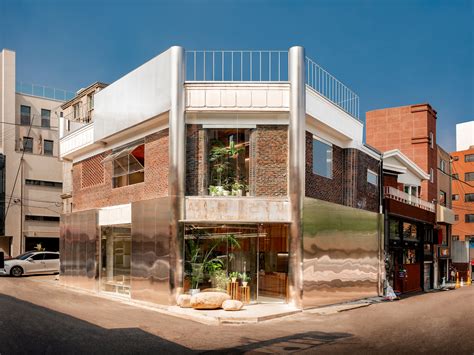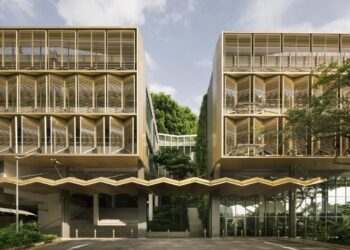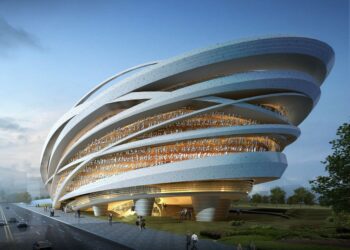The transformation of old structures into vibrant new spaces has rapidly become a cornerstone of modern urban development. Adaptive reuse projects, which breathe new life into obsolete or underutilized buildings, are reshaping cities around the world. This revolutionary approach to architecture not only conserves history but also pushes the boundaries of creativity and sustainability. In this comprehensive article, we explore the evolution, benefits, challenges, and future potential of adaptive reuse projects in contemporary architecture.
Architecture has long been a reflection of cultural evolution, technological advances, and societal needs. In recent decades, adaptive reuse has emerged as a forward-thinking strategy that challenges traditional demolition and reconstruction. Instead of viewing outdated buildings as liabilities, architects and urban planners now see them as opportunities for reinvention. This sustainable practice integrates modern functionality with the historical essence of the original structure, offering environmental, economic, and social benefits.
Adaptive reuse is more than just a design trend—it is a mindset that honors the past while innovating for the future. By converting obsolete factories, abandoned warehouses, or historical sites into offices, residential complexes, cultural centers, and more, adaptive reuse projects create a tangible link between history and modernity. These projects represent a fusion of heritage and technology, ensuring that valuable architectural narratives endure, even in rapidly evolving urban landscapes.
The Evolution of Adaptive Reuse
Adaptive reuse has undergone significant development over the last century. Initially, the focus was on preserving heritage for historical value. Today, the practice has expanded to encompass economic revitalization, urban regeneration, and sustainability. Several factors have fueled this evolution:
Historical Preservation Meets Modern Innovation
In the early days of the conservation movement, adaptive reuse was primarily concerned with saving historical structures from demolition. Landmark buildings were restored to their original conditions to honor cultural heritage. As cities grew and redevelopment pressures intensified, developers began to see the potential in repurposing these relics for contemporary use. This blending of old and new has not only preserved iconic structures but also introduced innovative design practices that respect historical character while incorporating modern amenities.
Urban Regeneration and Economic Growth
As many cities faced industrial decline and urban blight, adaptive reuse emerged as a catalyst for regeneration. Repurposing old factories, warehouses, and commercial spaces injected new life into neglected districts. This approach has not only revitalized local economies but also sparked community engagement and social transformation. Urban centers that invest in adaptive reuse often see an improvement in property values, an influx of businesses, and a renewed sense of community pride.
Sustainability and Environmental Benefits
One of the most compelling reasons for adaptive reuse is its positive impact on the environment. Constructing new buildings requires substantial raw materials and energy, contributing to pollution and greenhouse gas emissions. Adaptive reuse, on the other hand, repurposes existing structures, significantly reducing the environmental footprint. Furthermore, many adaptive reuse projects incorporate green building techniques, such as energy-efficient systems and sustainable materials, making them models of eco-friendly development.
Key Benefits of Adaptive Reuse
Adaptive reuse projects offer a multitude of benefits that extend beyond mere aesthetics. They provide significant environmental, economic, and social advantages, making them an attractive option for modern urban planning.
Environmental Sustainability
Adaptive reuse directly contributes to sustainability by minimizing the need for new construction. The benefits include:
A. Reduced Material Consumption: Repurposing an existing structure minimizes the use of new construction materials, thereby conserving natural resources.
B. Lowered Waste Generation: Demolition of old buildings generates substantial waste. Adaptive reuse mitigates this issue by utilizing the existing framework.
C. Energy Efficiency: Many adaptive reuse projects integrate modern energy systems and sustainable technologies, significantly reducing energy consumption.
Economic Advantages
The economic impact of adaptive reuse is equally profound. Not only does it breathe new life into derelict areas, but it also offers long-term financial benefits.
A. Cost Savings: Restoring an existing structure is often less expensive than building a new one from scratch, allowing for significant cost savings over time.
B. Job Creation: The renovation process creates jobs in construction, design, and related industries, stimulating local economies.
C. Property Value Enhancement: Revitalized buildings typically lead to increased property values and attract new investments in previously declining areas.
Social and Cultural Impacts
Beyond environmental and economic factors, adaptive reuse projects foster community engagement and cultural continuity.
A. Heritage Preservation: By retaining historical elements, these projects maintain a connection to a city’s cultural heritage and architectural narrative.
B. Community Revitalization: Adaptive reuse can transform neglected neighborhoods, strengthening community identity and pride.
C. Public Spaces: Many projects include the creation of community-oriented spaces such as cultural centers, museums, and public parks, enhancing quality of life.
Challenges in Adaptive Reuse
Despite its many advantages, adaptive reuse is not without its challenges. Developers, architects, and urban planners must navigate a range of issues to successfully implement these projects.
Structural and Technical Issues
Older buildings often present unique challenges compared to new constructions:
A. Structural Limitations: Some historical structures may not meet modern building codes or may require extensive reinforcement to support new purposes.
B. Integration of Modern Systems: Retrofitting a building with contemporary HVAC, electrical, and plumbing systems requires careful planning and execution.
C. Architectural Constraints: Balancing the preservation of historical features with the demands of modern design can be a complex process.
Regulatory and Legal Hurdles
Government regulations and legal considerations also play a significant role in adaptive reuse:
A. Historic Preservation Laws: These laws, while aimed at protecting heritage, can sometimes limit the scope of modifications or modernizations.
B. Zoning Restrictions: Adapting an old building to a new purpose may require changes to its zoning status, which involves bureaucratic processes.
C. Financial Incentives and Funding: Securing investment and navigating tax incentives or grants can be challenging, especially in urban areas with complex regulatory frameworks.
Community and Stakeholder Resistance
Changes in urban landscapes often meet resistance from various community stakeholders:
A. Cultural Sensitivity: Altering a historical building may evoke concerns about losing cultural identity.
B. Public Opinion: The local community’s acceptance of adaptive reuse projects can be uncertain, necessitating transparent communication and stakeholder engagement.
C. Gentrification Risks: While adaptive reuse can revitalize a neighborhood, there is a risk that it may also lead to gentrification, displacing long-term residents.
The Process of Adaptive Reuse
Successfully executing an adaptive reuse project requires a multidisciplinary approach and careful planning. The process typically involves several key stages.
Assessment and Feasibility Study
The first step in any adaptive reuse project is to thoroughly evaluate the existing structure:
A. Condition Survey: A comprehensive assessment of the building’s structural integrity, architectural features, and current usability is essential.
B. Historical Research: Understanding the building’s history helps identify elements worth preserving and informs design decisions.
C. Feasibility Analysis: Conduct a cost-benefit analysis to determine the financial viability of the project, including potential funding sources and economic impact.
Concept Development and Design
Once feasibility is established, the design phase begins. This phase is where creativity and technical expertise converge:
A. Architectural Vision: Develop a design that honors the building’s heritage while incorporating modern elements.
B. Collaborative Planning: Involve architects, engineers, historians, and community representatives to ensure a balanced approach.
C. Sustainability Integration: Plan for energy-efficient systems, sustainable materials, and environmentally friendly practices from the start.
Implementation and Renovation
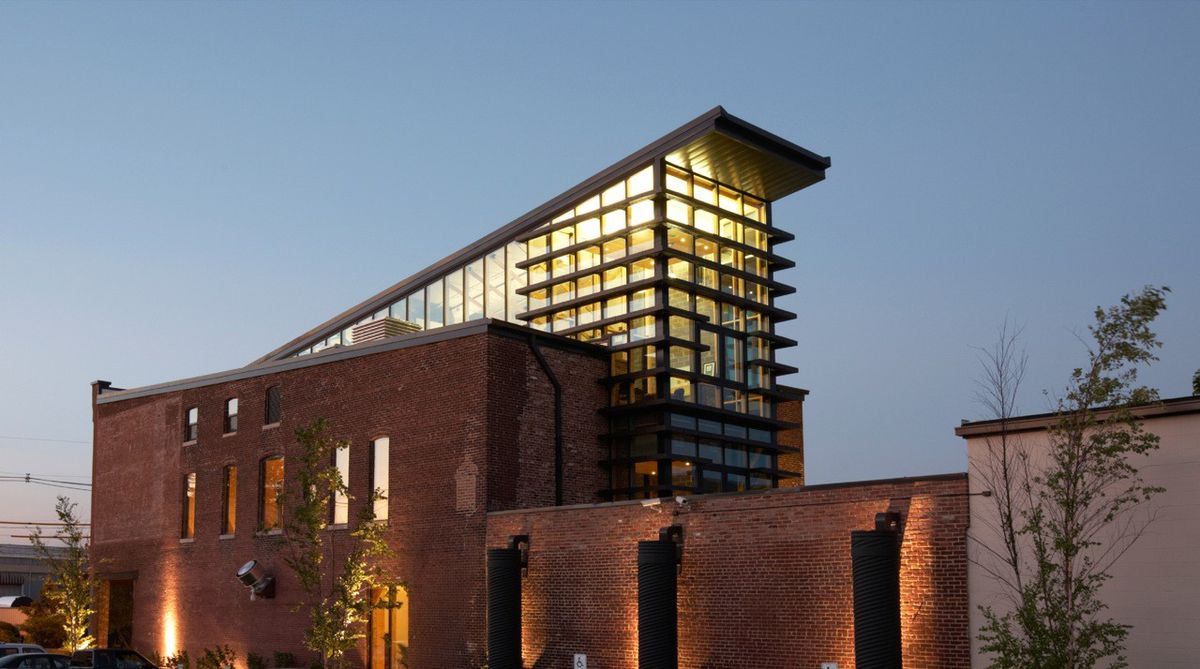
After the design is finalized, the construction phase brings the vision to life:
A. Detailed Planning: Create a detailed construction plan outlining timelines, budgets, and specific renovation tasks.
B. Skillful Execution: Employ experienced contractors familiar with both historical preservation and modern building techniques.
C. Ongoing Oversight: Maintain regular monitoring and quality control throughout the renovation to ensure adherence to design specifications and standards.
Post-Completion and Adaptive Management
Once the project is complete, the work is not over. Continued management is crucial for long-term success:
A. Performance Monitoring: Track the building’s performance in terms of energy usage, occupant satisfaction, and financial returns.
B. Regular Maintenance: Implement a regular maintenance plan to preserve both the historical features and modern systems.
C. Adaptive Management: Remain flexible and open to further adaptations as technology and community needs evolve.
Case Studies of Successful Adaptive Reuse
Several adaptive reuse projects around the world serve as inspirational examples of what can be achieved when history and innovation intersect.
The Tate Modern, London
The transformation of the Bankside Power Station into the Tate Modern art gallery is one of the most celebrated adaptive reuse projects in recent history. This project preserved the massive turbine hall and industrial aesthetic while creating a dynamic space for contemporary art.
A. Historical Preservation: Retained industrial elements to provide a unique architectural character.
B. Cultural Transformation: The gallery has become a major cultural hub, attracting millions of visitors annually.
C. Economic Impact: The project spurred economic growth in the surrounding area through tourism and urban revitalization.
The High Line, New York City
Although not a traditional building reuse, the High Line represents an innovative adaptive reuse concept. This elevated rail line was transformed into a public park and urban green space, providing a new destination in the heart of Manhattan.
A. Reimagined Infrastructure: Converted an unused railway into a vibrant park.
B. Urban Renewal: Revitalized a previously neglected urban corridor, boosting local businesses and community engagement.
C. Social Engagement: Offers a communal space that fosters interaction and cultural events.
The Distillery District, Toronto
The Distillery District in Toronto is a compelling example of industrial adaptive reuse. Formerly a large brewery complex, it has been renovated into a pedestrian-only district featuring art galleries, boutiques, and restaurants.
A. Historic Charm: Preserves Victorian-era industrial architecture.
B. Cultural Hub: Serves as a lively center for art, culture, and entertainment.
C. Economic Revitalization: Has significantly boosted local commerce and tourism.
Future Trends in Adaptive Reuse
As urban landscapes continue to evolve, the potential for adaptive reuse is expanding. Future trends in this field indicate a move towards even more innovative integrations of technology, sustainability, and community-driven design.
Technological Integration
Emerging technologies are playing an increasingly prominent role in adaptive reuse projects:
A. Smart Building Systems: Integrating IoT devices to monitor and optimize building performance in real time.
B. 3D Scanning and Modeling: Utilizing digital tools for precise documentation and restoration of historical features.
C. Renewable Energy Solutions: Incorporating solar panels, wind turbines, and other green technologies to improve energy efficiency.
Sustainability and Green Design
Environmental concerns remain at the forefront of adaptive reuse. Future projects will continue to push the envelope in sustainable design:
A. Net-Zero Buildings: Designing adaptive reuse projects to achieve net-zero energy consumption.
B. Eco-Friendly Materials: Prioritizing recycled and low-impact materials during renovations.
C. Green Infrastructure: Incorporating elements like green roofs, urban gardens, and rainwater harvesting systems to create self-sustaining environments.
Community-Driven and Inclusive Development
Ensuring that adaptive reuse projects benefit the entire community is becoming a central focus:
A. Participatory Design: Engaging local residents in the decision-making process to tailor developments to community needs.
B. Affordable Spaces: Balancing commercial success with the creation of affordable housing and public spaces.
C. Cultural Programs: Integrating cultural and educational programs that celebrate local history and diversity.
The Role of Adaptive Reuse in Urban Sustainability
Adaptive reuse is not merely an architectural trend; it is a crucial component of the sustainable urban framework. Its impact on reducing carbon footprints, conserving resources, and revitalizing communities makes it integral to the future of smart cities.
Environmental Benefits Revisited
Adaptive reuse directly reduces the environmental costs associated with new construction. By maintaining much of the original structure, these projects help preserve embodied energy—energy already invested in the building materials over decades or even centuries. This practice aligns perfectly with global efforts to reduce carbon emissions and combat climate change.
Economic and Social Synergies
The economic revitalization that follows an adaptive reuse project can transform neighborhoods and stimulate local innovation. When historical structures are repurposed for modern businesses, cultural institutions, or residential use, they attract investment and foster job creation. Importantly, this development model can also nurture social cohesion by preserving community heritage and providing public spaces that encourage social interaction.
Fostering Cultural Continuity
Adaptive reuse allows cities to tell their own stories. Each project becomes a living museum that honors a city’s past while embracing its future. By preserving tangible historical elements, adaptive reuse maintains a cultural continuity that is crucial for community identity and pride.
Strategies for Implementing Successful Adaptive Reuse Projects
For cities and developers looking to embark on adaptive reuse projects, a clear strategy is essential for overcoming inherent challenges and maximizing benefits. Here are key strategic recommendations:
A. Comprehensive Planning:
-
Conduct in-depth research and feasibility studies before committing to a project.
-
Engage stakeholders, including historical preservation societies and local community groups, early in the process.
B. Integrated Design Approach:
-
Fuse modern infrastructure with historical preservation techniques.
-
Utilize digital modeling and simulation to envision effective integrations.
C. Securing Funding and Incentives:
-
Leverage government grants, tax incentives, and private investments to offset costs.
-
Develop financial models that showcase long-term economic benefits to potential investors.
D. Adaptive Management Practices:
-
Monitor the performance of renovated structures and plan for future adaptations as technology and community needs evolve.
-
Implement sustainable maintenance routines to ensure the longevity of both historical and modern elements.
The Impact of Global Trends on Adaptive Reuse
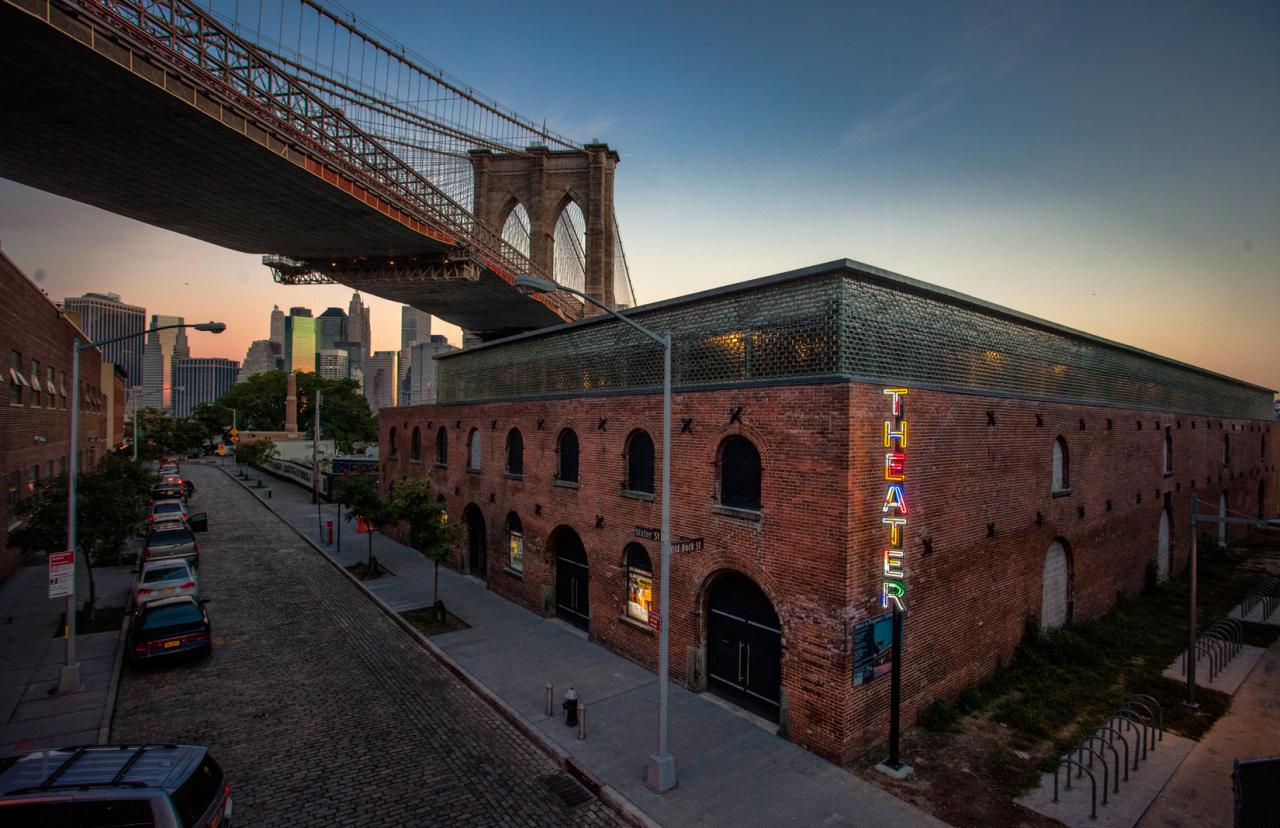
The global focus on sustainability and smart urban development is reshaping how adaptive reuse projects are conceived and executed. As cities worldwide face similar challenges of urban decay and environmental degradation, adaptive reuse offers a scalable solution that aligns with global objectives.
A. Urban Density and Space Utilization:
-
Cities with high population density increasingly rely on adaptive reuse to maximize existing space.
-
Efficiently repurposed structures help alleviate the pressures of urban sprawl.
B. Cultural Exchange and Global Inspiration:
-
Successful adaptive reuse projects serve as benchmarks for cities around the world.
-
International collaborations and knowledge exchanges continue to drive innovation in the field.
C. Policy Shifts and Regulatory Support:
-
Governments are increasingly recognizing the benefits of adaptive reuse and enacting policies to support such initiatives.
-
Zoning reforms and heritage preservation incentives are critical components of this evolving landscape.
Conclusion
Adaptive reuse stands at the convergence of heritage preservation, modern innovation, and sustainable urban development. By reimagining the potential of old structures, architects and urban planners are crafting dynamic spaces that honor the past while embracing the future. Adaptive reuse projects provide significant environmental, economic, and social benefits that contribute to the revitalization of urban landscapes and the creation of resilient cities.
In reimagining architecture through adaptive reuse, we are not only constructing buildings but also weaving together the narratives of our history with the promise of tomorrow. As cities continue to grow and evolve, adaptive reuse will remain a vital strategy for ensuring that our urban environments are sustainable, culturally rich, and economically vibrant.
The future of urban development is built on the foundations of the past—an enduring blueprint for progress that celebrates innovation without erasing heritage. For architects, developers, and communities alike, adaptive reuse offers a pragmatic yet inspiring path forward, transforming the lifeless into the luminous and the obsolete into icons of enduring beauty.

